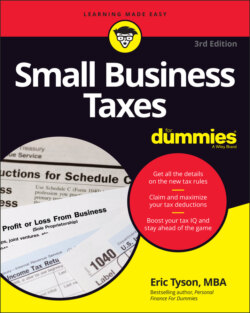Читать книгу Small Business Taxes For Dummies - Eric Tyson - Страница 61
Partnerships
ОглавлениеA partnership occurs in the eyes of the tax authorities when two or more people — the general partners (GPs) — operate a business together and divide the profits (or losses). The division need not be done equally.
The GPs are responsible for the company’s debts and liabilities. A partnership may also have limited partners (LPs) who generally provide financing to the business and who aren’t active in the company itself. Most small-business partnerships don’t have LPs.
A partnership is similar to a sole proprietorship and other pass-through entities for income tax purposes. Partners pay personal income taxes on their share of the partnership’s income distributed to them. This is done on IRS Form 1040 Schedule E, “Supplemental Income and Loss” (see the first page of the form in Figure 2-3; the complete form is available at www.irs.gov/pub/irs-pdf/f1040se.pdf). As sole proprietors do, partners pay self-employment taxes on income earned.
Though the partnership itself doesn’t pay any federal income tax, it has plenty of federal income tax reporting requirements. In fact, the tax rules and reporting requirements of a partnership are quite extensive and challenging. The partnership must file IRS Form 1065, “U.S. Return of Partnership Income.” And the partnership must complete and annually issue IRS Schedule K-1 of Form 1065 to each partner. You’d be well advised to use the services of a tax advisor if you’re going to have your business function as a partnership (see Chapter 13 for the scoop on getting help).
Courtesy of the Internal Revenue Service
FIGURE 2-3: Page one of IRS Form 1040 Schedule E, “Supplemental Income and Loss.”
